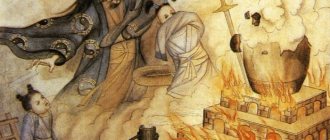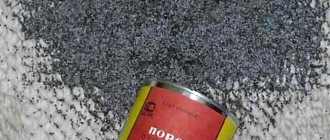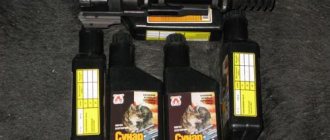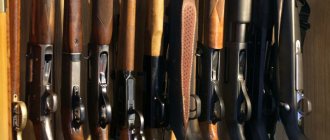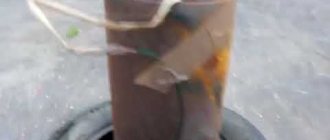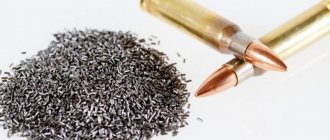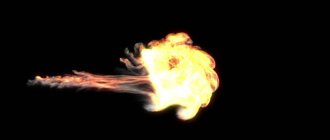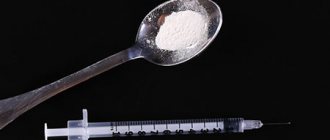It is known that the translation of the word “gunpowder” means “dust”, and it was invented hundreds of years ago.
The exact time of the invention of gunpowder is still unknown. However, even from school, many remember that black gunpowder appeared before our era in China. Alchemists from the Middle Kingdom were interested in many issues, including such materials for work as coal and saltpeter. Through experiments, they obtained a mixture of sulfur, saltpeter and coal, which burned at 300°C.
Was gunpowder invented by the Chinese?
Chinese fireworks
If you try to find the exact date of the invention of gunpowder, you are unlikely to succeed. Some sources say that gunpowder was known to the ancient Indians as early as one and a half thousand years BC, others say that gunpowder was known to the Chinese at the beginning of the first century AD. Many historians agree that the Chinese were the first to invent gunpowder. True, they did not use it for military purposes. Saltpeter was used in medicine. It was mixed with other substances (for example, honey) and set on fire, producing “healing” smoke. The Chinese also used gunpowder as entertainment during festivals. The well-known fireworks first appeared in China, and then spread to Europe. The Chinese filled a piece of bamboo with gunpowder and set it on fire, pointing the stick at the sky. There are also references to gunpowder as a weapon - these were bombs “pi li huo qiu” (translated from Chinese as “fireball with the sound of thunder”). They were put into catapults and thrown at the enemy.
Chinese bombs
But the Chinese and Arabs were never able to figure out how to use the power of gas to launch projectiles. It was the Europeans who did this first. Everywhere you can find one legend that Berthold Schwartz accidentally ground a mixture of gunpowder in a mortar, and a random spark got there and caused an explosion in the monk’s cell. True, there is no reliable information about Schwartz, but still, it was the monks who were the first to accurately describe gunpowder, namely the great inventor of the Middle Ages, Roger Bacon. He would definitely write down the recipe for gunpowder, but would not dare to show it further than the monastic order, because it was believed that such dangerous things should be hidden from the eyes of uneducated people.
However, the secret of gunpowder was soon revealed and used as a weapon for the first time.
Mixed varieties
Smoky varieties are produced in accordance with strict technological standards. The proportions of components may vary in different countries. Black powder is usually divided into granular substances and powder. The composition of smoky varieties includes potassium nitrate, sulfur, and charcoal. Potassium nitrate acts as an oxidizing agent, which improves combustion. Charcoal is a combustible component, and sulfur is an additive (intensifies combustion).
Grain varieties are produced in the form of irregularly shaped grains. The technological process includes 5 stages (in addition to drying and packaging):
- grinding into powder;
- creating a mixture;
- pressing to a disc-shaped state;
- granulation;
- polishing
The combustion efficiency of black powder is determined primarily by the fineness of the components, the quality of their mixing and the shape of the grains.
There is a classification based on grain size:
- large (0.75–1.25 mm in diameter);
- average (0.6–0.75);
- small (0.4–0.6);
- very small (0.25–0.4).
Black powder is used not only for hunting, but also for some other purposes. The difference between them is in the chemical composition.
The following varieties are currently produced:
- corded (for fire cords);
- rifle (necessary as an igniter for smokeless varieties);
- slow-burning smoky (strengthens or slows down the process in fuses and tubes);
- coarse-grained smoky (for igniters);
- mine (explosive);
- sports;
- hunting.
For hunting purposes, the optimal composition contains components in the following proportions:
- potassium nitrate - 76%;
- coal - 15%;
- sulfur - 9%.
The melting point of black powder is 300 degrees Celsius. A substance ignites when exposed to a spark or flame. In this regard, the material is considered dangerous to handle. Storage of black powder is allowed in sealed packaging, separately from other types of explosives. Black powder is hygroscopic and at a certain level of humidity (over 2%) does not ignite well. The peculiarity of smoky varieties is that they accelerate the development of corrosion processes in weapon barrels. Moreover, rusting is much more intense than in the case of nitrocellulose materials. This feature is associated with the presence of sulfur and sulfurous acid in combustion by-products.
The main use of smoky varieties today is fireworks. Black powder was used in firearms and explosive ammunition until the end of the 19th century.
The quality of black powder is determined by the following parameters:
- Color - black or brownish. There should not be any extraneous colors.
- Grains without a whitish tint.
- The grains should not crumble into grains of sand when squeezed. A normal reaction to mechanical stress is splitting into several parts.
- When pouring, the substance should not clump or leave a dusty trail.
In case of non-compliance with the specified parameters, the use of black powder is not allowed. The worst thing that can happen is that the gun barrel ruptures when firing.
Aluminum powder
This substance is a type of black powder and includes small particles of potassium or sodium nitrate (as an oxidizing component), aluminum powder (fuel) and sulfur. Aluminum powder is characterized by high temperature and burning rate and significant light emission. Used in explosives and flash compositions (used for flashes). Aluminum powder is almost unaffected by moisture, does not form into lumps, but is highly smeared.
Gunpowder as a weapon
August 26, 1346. After months of fighting for the French crown, the English king Edward III and his weary army reached the village of Crecy in northern France. For a millennium, horsemen dominated the battlefields. There were few Englishmen, but they were inspired by faith in their own weapons - longbows. Having fought for many years with the Scots and Welsh, Edward appreciated the quality of this powerful weapon. At dawn, the English warriors began to strengthen their positions at Crecy, the pits were intended to become traps for the French cavalry. At the approaches to the battle formations, stakes were driven into the ground that could pierce a horse. However, first of all, the British pinned their hopes on their main trump card - the longbow. As tall as a man, it was made of yew; to pull the bowstring it was necessary to apply a force of 45 kilograms, and the arrows hit the enemy up to 200 meters. It was more difficult to string a bow than a crossbow, but it was much faster to shoot. While the English archers were preparing to meet the enemy, Edward arrived on the battlefield along with the knights, but now the English cavalry had to fight on foot. Edward ordered the knights to dismount and take up position among the archers, forming a wedge-shaped formation called the furrow. “England and St. George! England and St. George! - the soldiers chanted.
The French had no doubt about victory, because their army was three times larger than the British. They countered the English bows with powerful crossbows. The French king Philip brought with him 6 thousand Genoese mercenaries. Armed with crossbows, they descended the hill and moved towards the British battle formations.
Modern historian Geoffrey Baker describes the battle this way:
The French rushed towards the British first. The crossbowmen walked towards them to the sound of trumpets, kettledrums and a piercing howl that filled the area with a thunderous cry.
However, the crossbowmen's arrows did not reach the British. The British stood out of reach of the Genoese crossbows. While the arrows of long English bows were quite enough to reach the crossbowmen. The archers took a step forward and began to shoot arrows with such speed that they fell like snow. Throwing down their weapons, the Genoese fled. This sight outraged the French king so much that he ordered his knights to attack the enemy on horseback. The knights rushed forward through the disorganized ranks of retreating crossbowmen. The ground on the battlefield was wet after recent rain. Soon the French battle formations turned into a shapeless and mud-stained heap of people in heavy equipment and horses, showered with a hail of arrows from the British. The French were in confusion, and only a few knights, seized by a furious impulse, managed to get close to the British. Here the axes, spears and swords of the British were already waiting for them. A lot of French died without receiving a single wound, they were simply crushed in the crowd. After 16 fruitless attacks, the French retreated, suffering a crushing defeat. The British maintained their battle formation until the next morning.
Ribalda
At dawn, Edward's ambassadors discovered 542 bodies of French nobles and knights, as well as 20 thousand dead soldiers and horses. The British lost 2 knights and 18 infantry. The British victory at Crecy stunned Europe. Their tactics, which relied on the power of longbows, came as a complete surprise to the Europeans. A new era was dawning for the infantrymen, the cavalrymen were destined to appear on the battlefields for several more centuries, but they would no longer decide the outcome of the battle. The era of knightly cavalry came to an end, but on the battlefield at Crecy the sound of not only the English was heard, Edward placed several bombards in position. These were small, primitive cannons that fired stones. Bombards were inaccurate weapons and mainly only frightened the French horses with their roar. However, it was their cannonade that heralded the beginning of a revolution that was to change the world forever, as well as the way of warfare - the advent of gunpowder .
Subsequently, gunpowder began to be used more and more often in military affairs and returned to the east as a new technology. For example, the Ottoman Sultan Mehmed II “The Conqueror” was able to use the new type of weapon extremely successfully. He used technology suggested to him by Urban, a Hungarian engineer.
Turkish cannon made using the same technology
Mehmed developed a plan for the siege of the city. He installed a cannon opposite the main gate of the city. On April 12, 1453, she finally “spoke.” The powerful walls that had protected Christianity for centuries collapsed within weeks. This super-cannon of Mehmed managed to change the course of history, but such a weapon turned out to be not very convenient for waging a siege. It required 60 oxen and 200 men to transport it; it took at least an hour to load the weapon into position. The recoil was so great that a new shot could only be fired 3 hours after the previous one.
Further development of this technology in the military leads to the emergence of a huge number of rifles, cannons, mortars and other weapons. But this type of gunpowder was not yet perfect enough for military purposes for many reasons. One of the main reasons is the release of a large amount of smoke, which during shooting indicated the shooter’s position, but at the same time interfered with aimed fire. Secondly, black powder is extremely sensitive to fire. Many cases are described when barrels of gunpowder exploded right in warehouses due to all sorts of little things (a small spark or just a blow from a metal object). All this and much more made me think about how to make gunpowder smokeless.
Nitrocellulose grades
Today, smokeless varieties of gunpowder are the most widely used. They are produced on the basis of nitrocellulose. Smokeless varieties are characterized by a high coefficient of useful smoke and the absence of smoke, which improves the shooter’s ability to hit targets.
Nitrocellulose powder is used not only in small arms, but also in the creation of explosives and pyrotechnic products. Smokeless compounds are also used as detonators to detonate explosive materials.
Nitrocellulose compositions are usually divided into several types, based on the components used and the type of plasticizer:
- Pyroxylin.
- Ballistic.
- Cordite.
- Solid rocket fuel.
Pyroxylin compositions
The components of pyroxylin powder are pyroxylin (91–96%), volatile substances (1.3–5%), stabilizer (1–1.5%), phlegmatizer (2%) and a small amount of graphite (up to 0.3%). Pyroxylin powder is produced in the form of plates, rings, ribbons, tubes, and grains. The main use of pyroxylin compositions is artillery or small arms.
Disadvantages of pyroxylin powder:
- low energy of released combustion products;
- technical difficulties with creating charges of significant diameter for rocket engines.
Pyroxylin powder is divided into several types, depending on its purpose:
- flame retardant;
- low hygroscopic (resistant to humidity);
- low-gradient (small dependence of the combustion rate on the charge temperature);
- low-erosion (low corrosive effect on the weapon barrel);
- phlegmatized (reduced combustion rate of surface layers);
- porous.
During the production of pyroxylin compositions, the following occurs: plasticization of the material, pressing of the resulting mass and final cutting to give the finished elements the desired shape. The solvent is removed in several stages. This is a labor-intensive process and leads to higher production costs.
Ballistic compounds
They include nitrocellulose and a non-removable plasticizer, which is why this type of gunpowder is called dibasic. Various components can be used as a plasticizer, including a nitroglycerin or diglycol base. The composition includes colloxylin (up to 60%), nitroglycerin (30–50%), diglycol component, aromatic additives (regulate combustion temperature), stabilizers, vaseline oil. Sometimes a finely dispersed metal alloy of aluminum and magnesium (metalized version) is present, which makes it possible to increase the temperature and released energy of the combustion products.
Ballistic compositions according to their scope of application are divided into rocket, artillery and mortar. Compared to pyroxylin powder, ballistic gunpowder is less hygroscopic, easier to manufacture, has the ability to create large charges, and is characterized by mechanical strength and flexibility. The latter quality is achieved thanks to a non-removable plasticizer. The disadvantage of ballistic compositions is the increased danger during manufacture, since the production uses a component highly sensitive to external influences - nitroglycerin. Another disadvantage is the technological impossibility of producing charges whose diameter exceeds 80 cm.
Cordite compounds
This type of gunpowder contains pyroxylin with a high specific gravity of nitrogen, a removable plasticizer (a mixture of alcohol, ether and acetone), and a non-removable plasticizer (nitroglycerin). Compared to pyroxylin compositions, cordite ones have higher power. There is also a significant drawback - a high level of stem burning due to the increased temperature of combustion products.
Solid rocket fuel
It is a mixture of synthetic polymers and includes up to 60% oxidizing agent (usually ammonium perchlorate), up to 20% polymer binder, and the same amount of fine aluminum powder. It is also possible to add specialized additives.
Solid rocket fuel was first produced in the 30s of the 20th century in Germany. In the 40s, American and Soviet enterprises began producing solid rocket fuel. The main advantages over ballistic gunpowder are the following:
- the highest specific thrust created among competing trains;
- the ability to create charges of various shapes and sizes - without restrictions on dimensions and other parameters;
- excellent deformation and mechanical properties;
- the ability to control the burning rate over a wide range.
As a result of the invention of solid rocket fuel, it became possible to launch strategic missiles over distances of up to 10 thousand km and even more. The maximum range that engineers managed to achieve using ballistic gunpowder did not exceed 2 thousand km.
However, solid rocket fuel has serious disadvantages:
- high production costs;
- long manufacturing process (takes several months);
- difficulties with disposal;
- environmental hazard due to the release of hydrochloric acid during the combustion of ammonium perchlorate.
"First" Chinese taikonaut
A crater located near the equator (11°S, 139°W) on the side of the Moon invisible from our planet is named after the first Chinese who wanted to fly to the natural satellite of our planet. Such an initiative was taken by the mandarin (major official) Wang-Gu (in legends and translations the spelling Wang-Tu or Wang-Hu is found).
As Qian Xuesen told it, the story was as follows. Either in the 15th or 16th centuries, one high rank built a kind of rocket based on a comfortable chair and a large kite. Along the perimeter, this structure was equipped with 47 large-caliber powder rockets. At the command of the mandarin, his servants lit the wicks, and Wang-Gu soared to the skies.
In the 5th grade they briefly talk about the ancient invention of Ancient China in history lessons. He changed the whole world.
